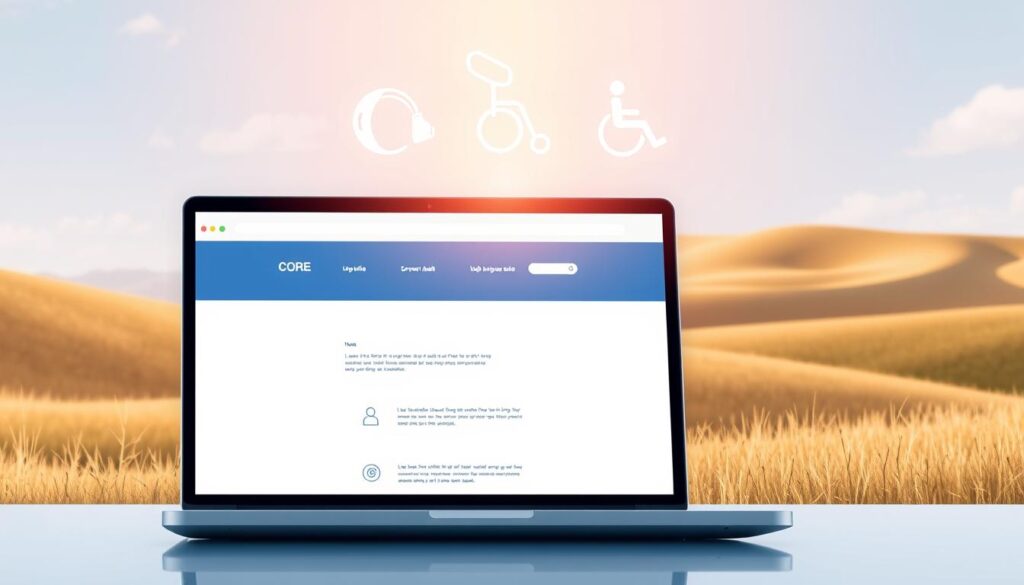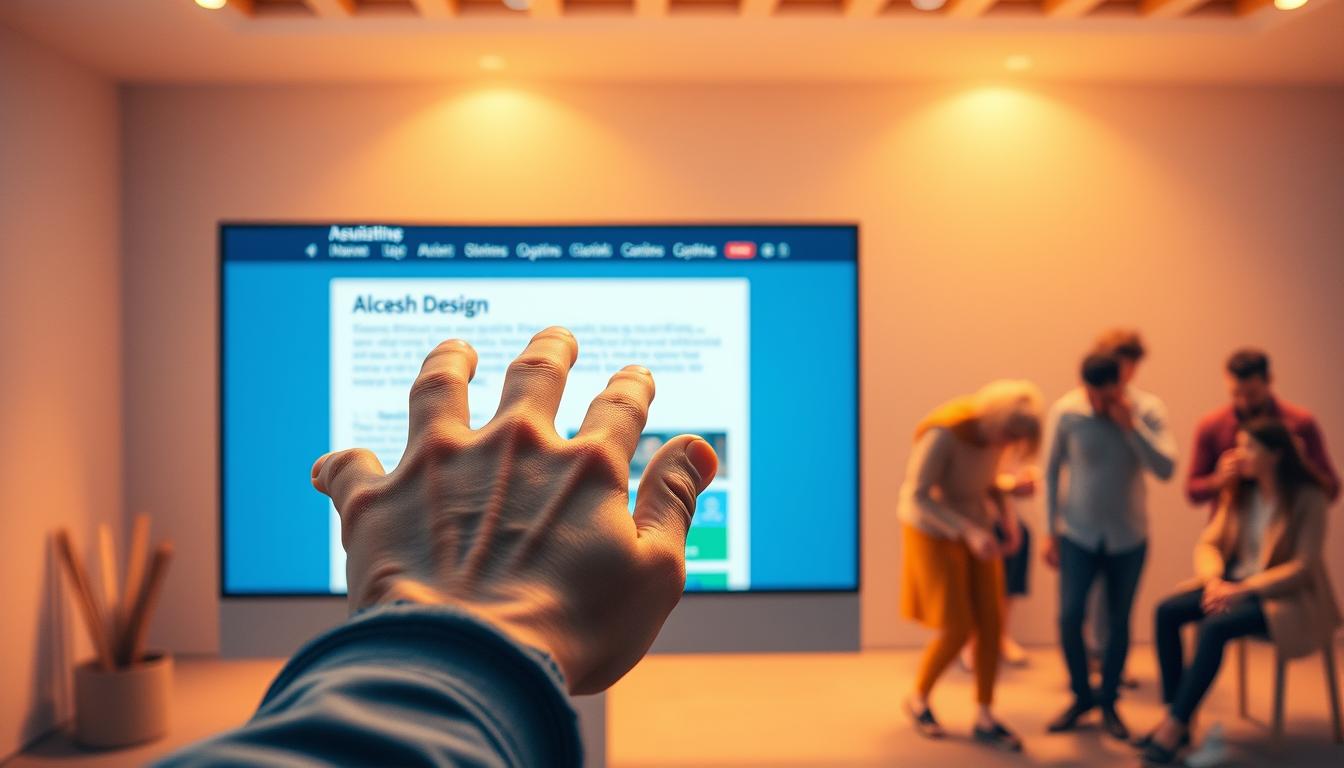In today’s digital world, making websites accessible is key. It lets people with different abilities easily use online platforms. With 16% of the world’s population having disabilities, making websites inclusive is a must.
Every digital space should be open to everyone, no matter their physical or mental abilities. An inclusive website helps people with various disabilities enjoy online content. This not only helps those with disabilities but also makes the web better for everyone.
Web accessibility is more than just following rules. It’s about creating a digital space that values all kinds of people. By designing websites that everyone can use, businesses can attract more people, make users happier, and show they care about society.
Key Takeaways
- Web accessibility enables equal digital participation for all users
- Inclusive websites benefit people with diverse abilities
- Accessibility improves overall user experience
- Digital inclusion supports social equity
- Accessible design opens opportunities for broader audience engagement
Understanding Web Accessibility in Today’s Digital World
The digital world keeps changing, making web accessibility more important than ever. As technology gets better, making sure everyone can access online content is key for inclusive digital experiences.

Digital accessibility is a bridge between technology and human diversity. The WCAG Guidelines set standards for developers to make websites accessible to all. This means everyone can use them, no matter their physical abilities.
Defining Digital Accessibility Standards
Digital accessibility standards aim to make online spaces easy for everyone to use. They tackle barriers users might face when using digital content.
- Ensure equal access for people with disabilities
- Provide clear navigation pathways
- Support multiple interaction methods
The Role of WCAG Guidelines
The World Wide Web Consortium (W3C) created WCAG Guidelines for global web accessibility standards. These guidelines are based on four main principles:
- Perceivable: Information must be presentable to users in ways they can perceive
- Operable: Interface components must be navigable
- Understandable: Content and operation must be comprehensible
- Robust: Content must be compatible with various assistive technologies
Key Components of Accessible Design
Creating screen reader compatibility and accessible design needs focus on certain technical details. Important aspects include alternative text for images, keyboard navigation support, and proper color contrast ratios.
By focusing on these accessibility standards, websites can offer inclusive digital experiences. This way, they welcome all users, no matter their abilities.
The Impact of Web Accessibility on Businesses and Society

Web accessibility is now key for businesses in today’s digital world. With 16% of the world’s population having disabilities, making websites accessible is crucial. It’s not just a choice, but a must for inclusivity and growth.
The economic benefits of accessible websites are huge. Here are some important points:
- Companies can reach users with over $13 trillion in annual expendable income
- Accessible sites draw in more visitors and boost engagement
- Good navigation and clear content lead to lower bounce rates
Web accessibility also shows a company’s social responsibility. It ensures everyone can use the internet equally. This makes websites better for search engines too.
Companies that follow ADA Compliance show they care about all users. They make digital spaces welcoming for everyone. This not only grows their market but also builds strong brand loyalty and a positive image.
The future of online interaction is about making spaces accessible to all. This way, everyone can connect, learn, and interact easily.
Web Accessibility Implementation Strategies
To make digital spaces inclusive, we need a solid plan and the right tools. Web developers and groups must work together to make sure everyone can navigate the web easily. This means making sure all users, no matter their abilities, can access and use websites.

Core Technical Requirements
Web accessibility relies on key technical parts:
- Implement semantic HTML structure
- Use ARIA landmarks for improved navigation
- Ensure proper focus management
- Create keyboard-compatible interfaces
Testing and Evaluation Methods
Testing is vital to find and fix accessibility issues. Good testing methods include:
- Automated accessibility scanning tools
- Manual testing with assistive technology
- User testing with individuals with disabilities
- Cross-platform compatibility checks
Tools and Resources for Development
Developers have many tools to improve web accessibility:
- WAVE accessibility evaluation tool
- Google Lighthouse accessibility audit
- axe-Core testing framework
- Screen reader compatibility checkers
By focusing on accessibility, companies can make their digital spaces welcoming to everyone. This not only helps users but also grows their audience.
Barriers and Solutions in Digital Accessibility

The digital world can be tough for people with disabilities. Only about 1.8% of the top websites are fully accessible. This shows how important it is to make digital spaces inclusive for everyone. Assistive Technology is key in overcoming these obstacles.
Some big barriers include:
- Lack of alternative text for images
- Poor color contrast (over 83% of homepages have limited text variation)
- Non-keyboard accessible navigation
- Missing form field labels
To make websites more accessible, we need a smart approach to design. Developers should focus on:
- Following WCAG 2.1 guidelines carefully
- Doing regular accessibility checks
- Using tools to improve accessibility
- Listening to feedback from users with disabilities
Technical details matter a lot. Good color contrast makes text easier to read. It’s also important for websites to work well with screen readers and to be easy to navigate with a keyboard.
The aim is to create a digital space that welcomes everyone, no matter their abilities.
Conclusion
Web accessibility is more than a rule—it’s a promise to make websites for everyone. By following accessibility standards, businesses can make digital experiences better for all. This includes people with different abilities.
Creating an inclusive website is an ongoing process. It needs constant learning and action. Digital platforms must keep up with new tech and user needs. This ensures everyone has a smooth and meaningful experience.
Web accessibility is not just about following rules. It’s about understanding and valuing human diversity. By designing with empathy, organizations can greatly improve user experience. They should focus on accessibility from the start.
Want to make your website more inclusive? Crowley Media Group offers top-notch web accessibility solutions. Our team can help you check, enhance, and keep your website accessible. Call us at (916) 572-9755 or visit crowleymediagroup.com to begin your journey today.








